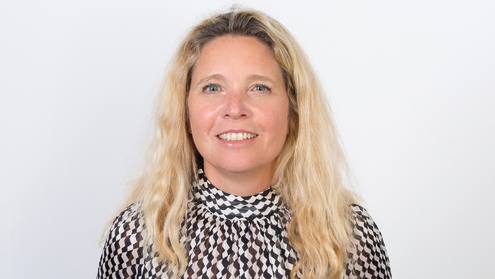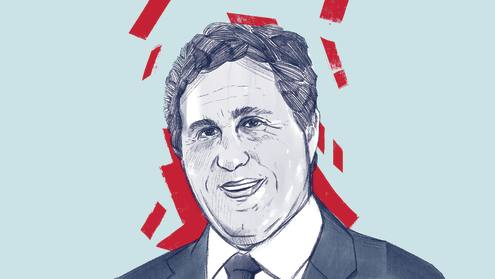As Ajay Banga settles into his new role as World Bank president, all eyes are on his efforts to adapt the bank’s mission to address the climate crisis. It is encouraging that he has already declared a strategic focus on both gender and climate as levers for development, equity and sustainability.
In fact, on his first day in office, Mr Banga expressed the need for annual investments of trillions of dollars to arrest the forces of climate change and fragility, while simultaneously building up human capital and fighting inequality in health, education and financial access.
Though this focus is heartening, I would argue that ‘financial access’ is not a hoped-for outcome, but rather a prerequisite. If the World Bank is concerned about mitigating the effects of climate change on poorer and more marginalised communities, the best way to do that is by focusing on women’s and girls’ prosperity and resilience.
Women with access to financial services are better equipped to deal with the shocks related to climate risks and to build their own resilience, alongside the resilience of their families and their communities. With nearly one billion women excluded from formal financial services, levelling the financial playing field enables women to survive and thrive in a world characterised by climate-related threats and risks.
I would argue that ‘financial access’ is not a hoped-for outcome, but rather a prerequisite.
Certainly, both women and men play vital roles in addressing the detrimental effects of climate change and environmental degradation. However, women’s livelihoods, especially in rural areas, are disproportionately affected by climate change. Women are the traditional managers of water sources, food production and livestock for the family — responsibilities that are dependent on environmental resources and susceptible to climate upheaval.
While more women depend on natural resources to secure their livelihoods, they have less access to them. And last but not least, women are more likely to work in agriculture, one of the sectors most significantly affected by climate change.
While it is women who bear the biggest burden of the social and economic consequences of climate change, it is also women who bring unique knowledge and specific experiences to these conversations. It is critical to understand their points of view if we are to develop and implement the smartest solutions to address climate change.
One such point of view comes from Indonesia, a country so vulnerable to climate change that it has begun the arduous process of moving its capital city from Jakarta, an area plagued by environmental issues, to Nusantara on the island of Borneo. Women’s World Banking has conducted substantial research among women in Indonesia.
One participant — we’ll call her Sunarti — is an orange farmer in rural Indonesia. She earns her income in part through the care and cultivation of orange trees she planted on land belonging to her husband’s family. She also owns and operates a small store in her community.
If Indonesia experiences the changes in weather patterns that are predicted for the region over the next few years, the Asian Development Bank estimates that poverty and vulnerability will increase anywhere from 7% to 15%. Sunarti’s financial health is highly dependent on the income from her orange harvest. If climate change impacts her crop, she stands to lose a large income stream, not to mention the loss of income from her store.
By understanding Sunarti’s point of view and recognising the domino effect of climate change on her and her wider community, we begin to see how financial inclusion and climate finance are intertwined.
Women like Sunarti need safeguards in place to plan and prepare for potential impacts on their livelihood from the effects of climate change. Before these women can take full advantage of the kinds of financial services that would help them address these risks, some foundational preconditions must be in place.
These include:
1. Ensuring universal identification for women
Making women and girls more visible is a fundamental act of inclusion that will enable better, more accurate, and appropriate interventions and should be a prerequisite to meaningfully addressing the financial impact of the climate crisis. In low- and middle-income countries, 44% of women lack identification versus 28% of men. Removing barriers to women’s access to formal identification documents should be an immediate priority for World Bank country-level programmes.
At a minimum, a verifiable national identification document is required to open a bank account and forms the backbone of most know-your-customer regimes. Ideally, all people — particularly women and girls — would also have documentary proof of registration for birth, death, marriage, and divorce, as keys to unlocking their ownership and inheritance of land, property and other assets.
These assets are typically used as a security for loans but are traditionally and overwhelmingly held in the man’s name. Not surprisingly, these are the same documents that allow women to vote and to be counted in a national census – i.e. to become truly ‘visible’.
2. Improving education for girls
Women’s confidence and willingness to use financial services can be boosted by ensuring girls have the same access to formal education as boys to build their literacy and numeracy. As more financial transactions move to the digital realm, digital literacy, or knowledge of and comfort with mobile technology, has become a logical and essential extension of financial literacy.
For low-income men and women alike, digital illiteracy is the greatest barrier to their adoption of financial services provided via mobile phone. Higher rates of basic illiteracy and innumeracy make digital adoption particularly challenging for women — difficulties exacerbated by a limited understanding of the internet.
3. Gender-disaggregated data
There are data gaps around many aspects of women’s economic lives, including the effects of climate change on their homes and businesses, as the example of Sunarti shows. Progress on both women’s financial inclusion and reducing their vulnerability to climate change could be greatly accelerated if governments, regulatory bodies and financial service providers collected and reported gender disaggregated data. Census data, for example, must move beyond the ‘household’ as the principal economic unit, since differences in men’s and women’s experiences require discrete interventions.
Likewise, financial inclusion will be forever out of reach without accurate, gender-disaggregated data about who is and who isn’t financially included (demand-side data), as well as data on how financial products and services are being used (supply-side data).
Notably, the World Bank’s Global Findex database is the global authority on gender-disaggregated demand-side information on the use of formal and informal financial services.
4. Closing the digital gender gap
For women to undertake financial transactions and take control of their finances, the digital gender gap must be closed. Mobile phones are a game-changer in expanding access to financial services — from paying, to getting paid, to sending money — all of which are powerful contributors to resilience.
Women in low- and middle-income countries are 8% less likely than men to own a mobile phone, and 20% less likely to use mobile internet or own a smartphone. The World Bank can play a critical role in working with governments and the private sector to end the mobile phone gender gap by building the infrastructure needed to support mobile connectivity, increasing handset availability, and facilitating competition and consumer choice.
These foundational elements of financial inclusion — identification, access and literacy — are identical to those necessary for women’s resilience to climate shocks. In the face of a climate emergency, a woman grappling with her own displacement or her spouse’s could use a smartphone to send or accept remittances from her absent partner and wider family. Likewise, a woman smallholder farmer can use a digital bank account to save toward a financial buffer, or buy crop or weather index insurance to mitigate against climate risks.
The World Bank Group has been a leader in the drive to close the gender gap in financial inclusion for over a decade and recognises that gender-smart climate finance is critical for progress, results and impact.
As the World Bank’s climate mandate intensifies, it is imperative that stakeholders recognise this new effort does not represent a pivot away from the goals of women’s financial inclusion, but rather that women’s financial equality is a necessary condition for achieving the world’s collective climate goals.
Mary Ellen Iskenderian is president and CEO of Women’s World Banking.







